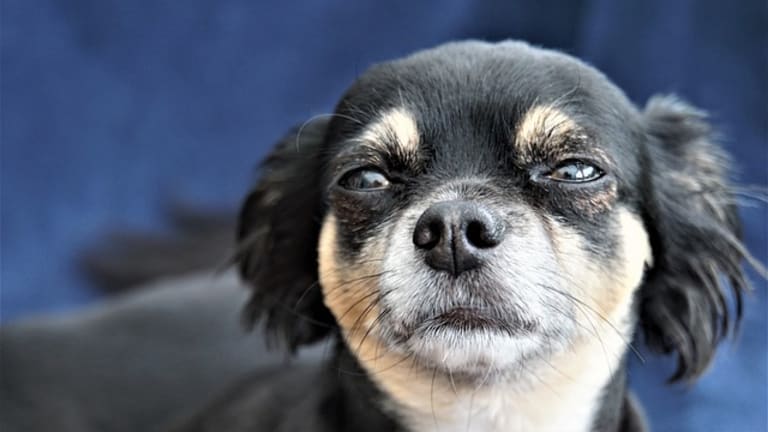
Whiskers are more sensitive than regular hairs because the follicles from which they originate are packed with blood vessels and nerves. The majority of whiskers or vibrissae are located on a dogs face around the eyes along the muzzle and under the jaw line.

Unlike humans dogs of all ages have whiskers.
Why do dogs have whiskers on their cheeks. Like cats dogs will often reflexively flare their whiskers and then point them in a forward direction when they feel threatened which some scientists believe indicates that whiskers play a role in the defense strategy during combative situations with predators and other dogs. Whiskers Are Different From Hair. Hair fur fluff whatever you call it and depending upon your dogs breed or.
Before we find out the answer to the question What are dog whiskers for lets get to know the four different types of whiskers dogs have. These whiskers may look the same to dog owners but each type of whisker has a unique function. Genal Whiskers They sprout on your dogs cheeks.
Genal whiskers serve as a sensor that aids him to get a feel of whats happening in his peripheral vision. Unlike humans dogs of all ages have whiskers. Newborn pups do not need to reach puberty before growing whiskers which are among the first hairs to develop and are present at birth.
Whiskers are more sensitive than regular hairs because the follicles from which they originate are packed with blood vessels and nerves. Whiskers are unlike any other hairs found on your dogs body. They are thicker longer and sprout from a hair follicle thats highly innervated by an abundance of sensory nerves responsible for helping your dog navigate the world around him.
Also known as vibrissae whiskers tend to work in an antenna-like function. The chin whiskers can pick up vibrations that your dog reads. If your dog perceives the information received through these vibrations as a threat he can use this information against the predator in defense.
Chin whiskers also provide him with feedback about the location and movement of an opponent in the event of combat. Certified dog behavior consultant Joyce Gamsby Kesling proposes the possibility of. Some people especially those who show their dogs in competitions choose to trim whiskers because they think it makes their dogs look neater.
Pulling or plucking on the whiskers would be painful. Why is it so important for humans to have a balanced nutrition but not for animals. Most animals have a fairly simple diet carnivores eat only meat their whole life cows eat exclusively grass etc.
The majority of whiskers or vibrissae are located on a dogs face around the eyes along the muzzle and under the jaw line. These whiskers are generally about twice as thick as the rest of a dogs coat and are course and wiry yet still flexible. The role of the whiskers is to pick up and sense changes in airflow.
This provides information to a dog about movement pressure and location of objects people or other animals. Rdogs is a place for dog owners of all levels of knowledge skill and experience to discuss all topics related to dogs. This subreddit is a great starting point for a lot of information but you should always verify and expand upon what youve read before putting it to use in your daily life.
Advice on this forum is not a substitute for advice from a trained and credentialed professional. Well in this blog we are going to shed light on why dogs have whiskers and what are they really for. Whiskers also known as vibrissae or tactile hairs act as antennae for dogs.
These facial enhancements are like sensory devices that assist in guiding the dog to get through the daily routine happenings. Besides those general uses for a dogs interaction with the world whiskers also are key in body language. This is true in terms of his humans interpreting his body language but other dogs as well.
For example if a dog is relaxed and happy his whiskers often fold-downin along his. Navigation The presence of whiskers helps dogs navigate around their surroundings. This is possible because they are sensitive to the vibrations in air currents.
As such when the air moves the whiskers vibrate and help dogs determine the presence of nearby objects. Dogs commonly chew anothers whiskers during grooming sessions. This behavior has little to do with tidiness though.
Canadian neuroscientists have suggested that this apparently affectionate whisker chewing might be in actuality an act of dominance. Whiskers are pieces of coarse hair that sprout of out a dogs hair follicles on their face. The average dog has whiskers above their eyes on the sides of their muzzle and on their chin.
Your dogs whiskers allow it to navigate their environment and avoid threats that could be potentially harmful to them. Heres the thing dogs have blind spots under their chins which is why sometimes they cannot see that treat you tossed thats right under his nose. While a dogs mystacial whiskers those whiskers on either side of your dogs muzzle provide information about whats on the dogs left and right the hairs on his chin can tell him whats happening right beneath his head protecting him from injury.